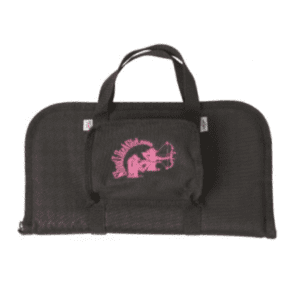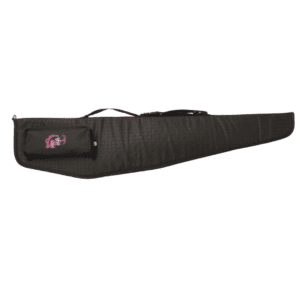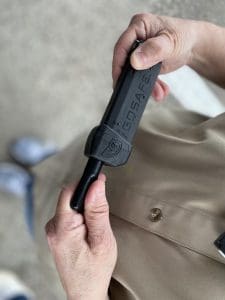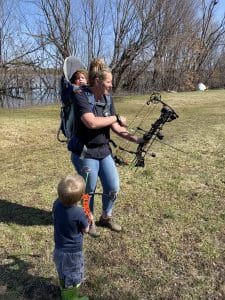
- Articles, Safety
Home Defense: What’s Your Game Plan?
I believed I had a concrete home defense plan until the security alarm sounded! It was Sunday morning, around 11:00am, and I was home alone. There was no chance that anyone who lived with me could have accidentally tripped the alarm because they all were working in other states at the time.
I was preparing to dress, when I heard a loud siren and the audio alarm shouting, “Basement, Window, Door!” I had never heard this sound before. It was then, that I enacted my Home Defense Plan, or so I thought.

What would you do?
My adrenaline began to rush. I grabbed my firearm and my cell phone and proceeded to prepare for an encounter. I silenced the alarm and listened closely for intruders who may have infiltrated my home.
I heard nothing. It was at that time that I began to move towards the top of the stairway to secure a better vantage point for seeing or hearing the threat…nothing! My home phone rang.
Yes, I had a landline phone that was used primarily for emergencies and for the alarm company. After all, this was a perceived emergency. It was my alarm company calling to see if everything was okay. I stated that I didn’t know if it was okay or not. They offered to stay on the line as I investigated further.
What I actually did

It was at this point that my home defense plan changed. What was supposed to happen was that I was to retreat to my safe room and call for help. However, what I did was to begin to move towards the basement in search of the breach in my security plan.
The presumed back-up support of having my alarm company still on the line gave me that added courage to face my curiosity. I proceeded to the basement, shouting out to the intruder the warnings to vacate the premises and that the police were on the way. I still heard nothing!
Upon checking the entire basement for security breaches such as an opened door, broken window, or the intruder, I found nothing. The threat was determined to be a faulty sensor on the window, which was ultimately replaced by the alarm company.

Home Defense Planning: Low Ready, High Ready, Get Ready
This test of my home defense plan changed my plan entirely and prompted me to offer a class in home defense planning.
In developing a home defense plan, what should one consider? Who is included in the planning process? Does everyone in the home know the plan and know their role should the plan be enacted?
Let’s consider both the exterior and interior components of the home defense planning process. These components are designed to assist us in thinking about our plan and are not designed to be all-inclusive. Some plans are much more elaborate than others, but we must start somewhere.

We often believe that an intruder will attempt to enter our home in the middle of the night when we are dreaming about beaches and butterflies. What we know is that an attempt can happen any time of day. How do we prepare mentally and physically for the potential threat?
We prepare by developing a plan through “mental scripting,” running possible scenarios and responses to those scenarios through our mind and practicing those responses in your home. Create hypothetical security breaches in your home and develop a solution to each of them. Ideally, the best way to win in a negative encounter is to avoid it in the first place, when possible. When you are unable to avoid it, a solid plan, that’s been practiced, helps tremendously.

For instance, if you hear glass break or a door being kicked in, what’s your game plan? If the alarm is tripped, what are the logical next steps? Thinking through as many breaches to the security in your home will better prepare you when it’s time to act.
Exterior Considerations
Evaluate the outside of your home for obvious weaknesses that may be appealing to a potential criminal. Consider the following:
- Are your windows secured by a locking mechanism?
- Are the covered by large bushes or plants which allow for a criminal to conceal him or herself from view?
- Do you leave your garage open and unattended?
- Do you set your alarm system, even when you’re at home?
- Are alarm company stickers or signs visible?
- Is proper lighting used such as motion lights or automatic yard lighting system? Are security cameras used around the perimeter of the home?
- And are doors locked using a deadbolt lock and reinforced strike plates with longer screws?
- Are timers used for in-home lighting to create the appearance that the house is occupied?
Interior Considerations
The interior plan begins with all family members who have access to the home. Having a defined home defense plan is important and assigning roles to all family members is vital. Just like we practice fire drills, we need to practice all other emergencies as well, including breaches to home security.
Be sure that every age-appropriate person in the home knows how to dial 911 and knows what to say. Other interior considerations include, but are not limited to, the following:
- Has a safe room been established?
- What equipment is housed in the safe room?
- Are all tools in the safe room charged, loaded and ready to use?
- Has a system been devised to account for everyone who is supposed to be in the home at the time of the security breach?
- What defensive tools will be used?
- Where are they located?
- Are defensive tools staged throughout the home?
- Are the family trained in using the defensive appropriate tools?
- Who will assist the other family members and pets?
- Who will call 911?
- Has the safety plan been shared with guests in the home (i.e., pet sitters, babysitters, house sitters, out-of-town guests, etc.)?
- Have family code words or commands been determined?
- How are contractors in the home treated?
- Are cell phones charged and car keys readily accessible?

The first line of home defense is situational awareness.
Being aware of your surroundings both in and around your home will help you to determine when something doesn’t “feel right.” Your instincts are your personal alarm and serve to alert you to potential danger. Listen to your intuition and use all of your senses. Sometimes the environment changes before you actually see the threat.

Whenever you detect safety vulnerabilities, start crafting a plan for the “what if” scenarios. As you watch news reports about home invasions and other security breaches, evaluate your plan and tweak it as necessary. Home protection plans are ever-changing plans based on your level of comfort, people who have access to your home and actual security breaches.
As with any plan, you must practice it regularly and those practice exercises must include each family member. They must execute their roles and become proficient doing so. They must practice using the appropriate defensive tools assigned to them.
Muscle memory is the ability to reproduce a particular movement automatically and is developed by frequent repetition of that movement. Muscle memory will enhance the effectiveness of any home protection plan, exponentially. It will also create a sense of confidence for every family member who has a role to execute.

Developing a home defense plan is the starting point. Executing it flawlessly takes practice. My plan has evolved over the years. I find myself still tweaking it occasionally. Your plan may change, but the overall goal remains the same. Protecting yourself and your family is the number one priority.
- TAGS: home defense




































